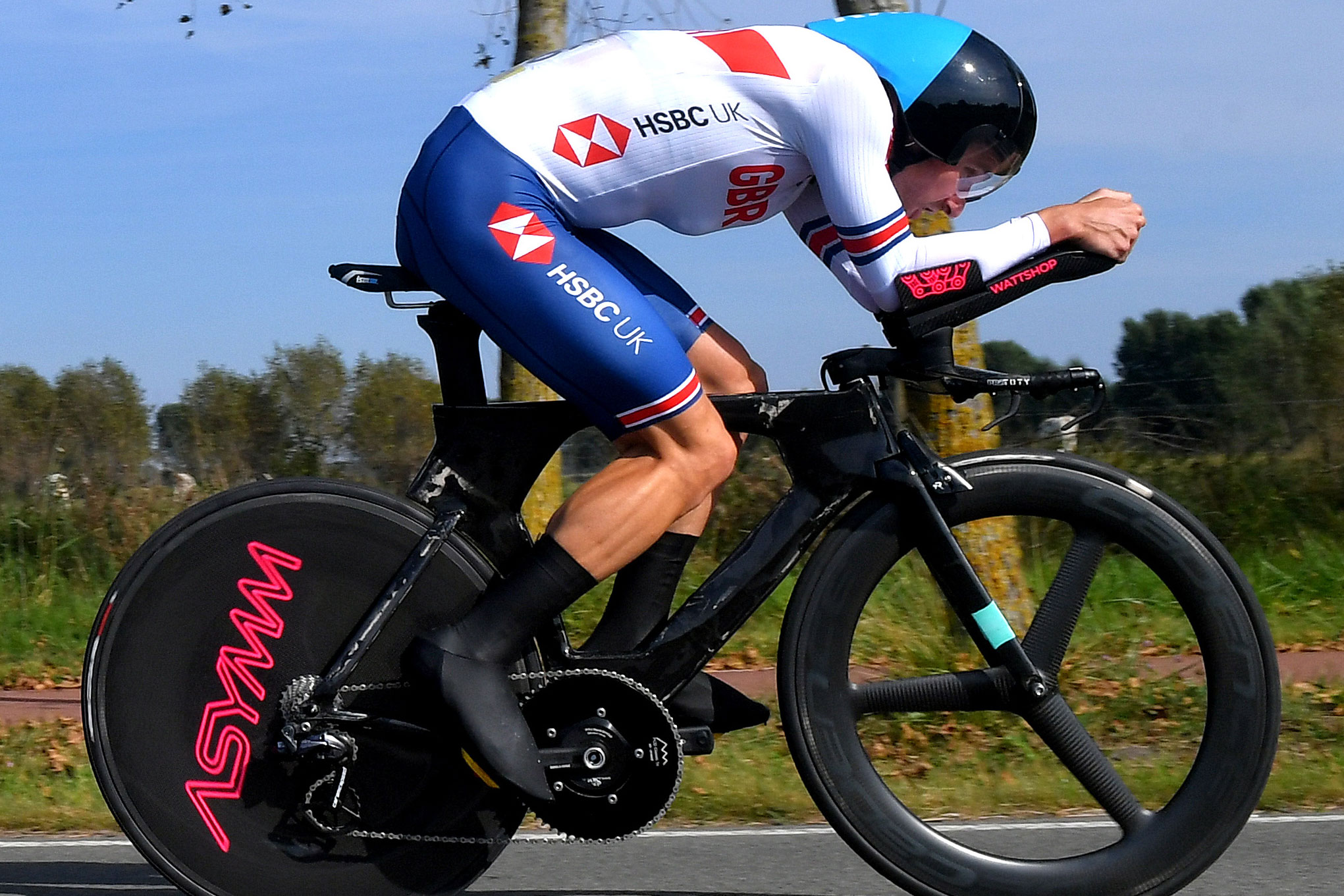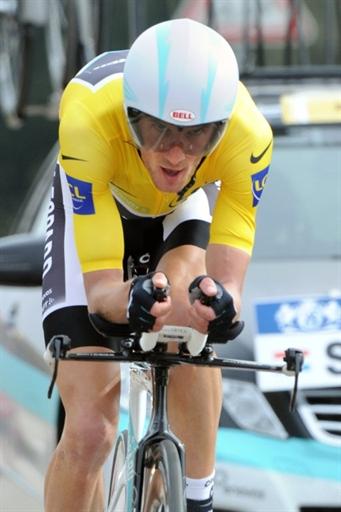What was stuffed down Great Britain's skinsuits in the Mixed Relay Time Trial?
Dan Bigham at the centre of controversy once again

After his involvement in the controversial kinesiology tape saga that made headlines during the Tokyo Olympics, it appears that Dan Bigham is pushing the boundaries of the UCI rules once again.
During today's Team Time Trial Mixed Relay at the UCI Road World Championships in Flanders, he and Alex Dowsett were seen with something down the front of their jerseys, described by Michael Hutchinson as a "gigantic monoboob" in Eurosport commentary.
"You could potentially get an aerodynamic advantage by putting something in there if you get it right," Hutchinson claimed, before questioning its legality.
Exactly what was stuffed into their skinsuits was initially uncertain, but Dr Xavier Disley, aerodynamics expert and owner of Aerocoach, quickly confirmed to Cyclingnews that it was a "radio built into a massive padded pocket", with its position most likely for aerodynamic gain.
"We get WorldTour riders to stick radios on their front when doing testing etc.," Disley continued. "On the back is a big penalty 99 per cent of the time."
Placing the radio down the front of a time trial skinsuit is not uncommon in top-level time trials, and the Belgian team's BioRacer skinsuits had pockets built into the chest of the skinsuit for this very reason.
However, Great Britain's Dan Bigham and Alex Dowsett seem to have gone a step further, placing the radio into a large padded pocket and placing that inside the suit. Notably, the team's third man, John Archibald, didn't have any such protrusion.
The latest race content, interviews, features, reviews and expert buying guides, direct to your inbox!
Speaking after the race, Bigham confirmed it was indeed the race radio, and spoke openly about the tactic of putting a radio on the chest, claiming its benefits were twofold.
"It was led on the safety front," he explained. "If you crash with a radio on your back, it hurts, it really hurts, and it's also not very good aerodynamically."
However, he didn't go into detail as to the size of the radio, or why the team would use a large padded pocket.
Dowsett went further, claiming the reason for the protrusion was simply the size of the radio and its position on his chest.
"Radios come in all shapes in sizes," he said. "You could have a big old walkie talkie. That was our race radio.
"I've got a heart rate strap here. So if it sits on top of the heart rate strap, then it protrudes a little bit more."
When asked about the potential advantages offered, and the legality of the product, Dowsett's retort centred around the pre-race checks: "The UCI do all the checks. We spend 15-20 minutes with them before the start. They check the bikes before we come to the start as well. They look us up and down, and at the end of the day they let us roll down the start ramp or they don't."

The tactic was likened by Disley to that of Frank Schleck in the 2011 Critérium International, in which he used a Camelbak hydration pack down the front of his jersey in a time trial to create an aerodynamic fairing. Schleck later faced investigation from the UCI, and the tactic was subsequently banned.
The legality of Great Britain's tactic today is yet to be confirmed. Cyclingnews has contacted the UCI's Innovation Manager, Michael Rogers for comment.

Josh is Associate Editor of Cyclingnews – leading our content on the best bikes, kit and the latest breaking tech stories from the pro peloton. He has been with us since the summer of 2019 and throughout that time he's covered everything from buyer's guides and deals to the latest tech news and reviews.
On the bike, Josh has been riding and racing for over 15 years. He started out racing cross country in his teens back when 26-inch wheels and triple chainsets were still mainstream, but he found favour in road racing in his early 20s, racing at a local and national level for Somerset-based Team Tor 2000. These days he rides indoors for convenience and fitness, and outdoors for fun on road, gravel, 'cross and cross-country bikes, the latter usually with his two dogs in tow.